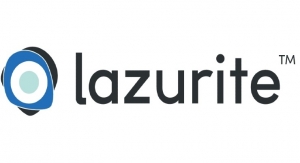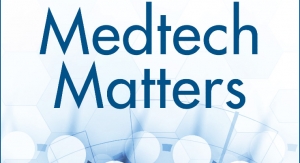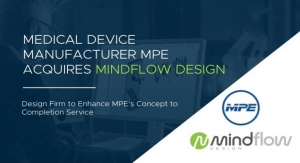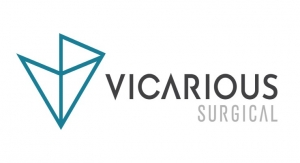Kellen Hills, Contributing Writer11.13.14
Call it a new paradigm. Call it a sea change. Or, if you prefer, call it downright frustrating. Whatever label you give to today’s medical device environment, the current and future reality is that the regulatory elements of medical technology are now just as important as how it’s designed, manufactured and marketed.
How times have changed. Most medical device veterans (those with 30 years or more experience in the industry), will remember a time when registering a device was a much simpler, straightforward process. Prior to 1976, if a medical device developer wanted to get a product to market, it could be done without any government oversight.
However, as biocompatibility issues and health scares rose, pressure mounted against the United States government to institute medical device-specific rules and regulations. On May 28, 1976, the Food, Drug, and Cosmetic Act (FDCA) was amended to include regulation for medical devices, and required all medical devices be systematized into one of three classes, with Class I devices being the lowest risk (e.g., elastic bandages), Class III devices posing the greatest risk (e.g., an artificial heart), and Class II devices falling somewhere in-between (e.g., infusion pumps).
In addition, Section 510(k) of the FDCA required device manufacturers to notify the U.S. Food and Drug Administration (FDA) of their intent to market a medical device. Up until 2009, these 510(k) submissions were relatively uncomplicated—certainly when compared to today’s 510(k) requirement—which is why for more than two decades, very few medical device companies had a dedicated regulatory affairs (RA) group. And if they did, RA usually only had limited involvement with product development, marketing and manufacturing.
In 2012, RA’s role changed almost overnight with the passing of the Food and Drug Administration Safety and Innovation Act and the Medical Device User Fee Amendments of 2012, commonly called MDUFA III (the third iteration of the FDA’s user fee program). These pieces of legislation completely altered the regulatory landscape for medical device manufacturers (both OEM and contractor/suppliers). In addition to affecting how the FDA scrutinizes medical device manufacturers, the new rules also transformed the relationship between the regulatory affairs team and every other department within a medical device organization.
Going forward, the only efficient, cost-effective, and compliant way for U.S. medical device companies to get their products to market in the United States and abroad is to involve regulatory affairs in every aspect of a medical device’s life cycle—from concept through post-market surveillance. By cultivating a collaborative relationship between regulatory affairs and all other departments within the organization, medical device companies will be better able to protect themselves, their resources, their customers and ultimately the patients who benefit from the device.
Taking a 30,000-foot perspective, here’s how RA can offer valuable support and insight at each stage of a medical device’s life cycle:
Concept and Feasibility Stage
Many medical device companies have “future growth” teams that meet consistently to look at what their existing product portfolio is and what it should look like in five or 10 years. Without regulatory affairs involvement in these meetings, time and resources are likely to be wasted.
For example, the research and development (R&D) team would present a concept for a novel product that would be launched in two years and submitted for 510(k) clearance. If the manufacturing department acknowledges that it is able to build it and marketing confirms that it will be able to sell it, the team would decide to move forward with concepting, prototyping and testing. Previously, RA would only be involved when the team felt it was ready for 510(k) submission.
Today, the determining factors for whether a device qualifies for 510(k) or pre-market approval (PMA) submission have gotten much more stringent and convoluted. If the device concept is indeed novel, it is unlikely to have a predicate (or may be significantly different from the most comparable device), which means that it wouldn’t qualify for 510(k) submission. Instead, the FDA would require the device be submitted as a PMA. To move the submission process forward, the company first would have to spend millions of dollars in clinical trials and years getting it through the PMA process. With this information, the future growth team is likely to abandon the project. Had RA been involved in the team’s conversations from the outset, all of that time and money could have been saved.
Preclinical Stage
The bench testing required by the FDA for 510(k) and PMA submissions often is determined by available predicates, standards organizations and known device issues. RA is a valuable resource for gathering this information and helping the product development team identify the testing methods that will be required by the FDA and determining the most efficient, effective, and compliant testing strategy.
For example, with a 510(k) submission, the FDA wants the medical device company to do the following:
• Test their device.
– If testing standards exist with acceptance criteria this process is fairly straightforward.
– However, if there are no standards or existing standards do not include acceptance criteria, the burden is on the manufacturer to:
* Test another legally U.S. marketed device (predicate) using the exact same testing method; and
* Compare the devices head to head in order to prove that the newer device is substantially equivalent
(in effect, as safe andeffective) as the predicate.
– In some cases, published biomechanical literature may be used for comparative purposes as well.
• The best way for any medical device manufacturer to approach testing is to run any and all design differences through their regulatory affairs team so that RA can help ensure that:
– A predicate exists that the FDA will accept;
– There’s a solid risk management plan in place;
– FDA guidance documents for testing are adhered to; and
– All available standards and literature for testing are evaluated and applied where appropriate.
Marketing Stage
Marketing has the formidable job of turning engineering-speak into decipherable features and benefits that will help sell the medical device. Highlighting the unique and novel attributes of the device that differentiate it from the competition is an important part of that process. However, since the majority of devices in the United States are cleared through the “me too” 510(k) process, those attributes can’t be too different from currently marketed predicates without opening the company up to FDA scrutiny and warning letters.
By planning ahead and coming up with potential claims and message points while the device is still in the early concept and prototyping stage, and then running those concepts by regulatory affairs, marketing increases the likelihood that its claims won’t raise red flags with the FDA (even though FDA does not, technically, review and approve claims). For example, if marketing decides on certain performance claims while still in the early stages of product development, RA can help guide the preclinical team on testing methods and strategies that will help substantiate those claims. In other cases, RA might determine that adding something as simple as a qualifier (e.g., “data on file” or device “may” or “is intended to”) to the marketing piece will be sufficient.
From an RA perspective, it’s never about just staying, “No, you can’t make that claim.” It’s about working collaboratively with marketing to figure out what needs to be done in order to substantiate a claim so the company won’t find itself in legal or regulatory crosshairs.
Manufacturing/Production Stage
Until recently, a typical medical device manufacturing team worked (for the most part) independently of regulatory affairs. If manufacturing wanted to machine a part instead of forge it, or change to a different supplier, they may do so without perceiving the need to notify anyone in regulatory affairs. But in today’s tightly regulated medical device environment, that independent decision-making can have severe repercussions for a medical device company.
Change control has become a major sticking point with the FDA and with international governments. Even the smallest, most seemingly insignificant change could actually shut down a company’s business in parts of the world. RA has the insights to help ensure that any medical device-related change will adhere to both U.S. and global regulatory requirements, which is why it’s vital for manufacturing and regulatory affairs to work collaboratively.
The level of involvement, control, and notification that is required depends on the type of device, its classification, where and how it is marketed, and a host of other factors. For example, a U.S. medical device manufacturer selling a device in another country may need to notify that country’s regulatory agency if it wanted to move an operation to a new facility or supplier. In addition, because most regulatory agencies expect high-level change control detail, it’s possible that the authorities not only would require the company to notify them of such a change, but to halt imports of any products into the country until the appropriate documentation has been reviewed and approved. The RA team is equipped to help manufacturing navigate these complicated regulatory nuances so work can be completed with as little disruption or risk to the company as possible.
Post-Market Stage
Currently, U.S. regulations are not on par with European and other international regulations for post-market surveillance. For the most common 510(k) devices, U.S. regulations do not require manufacturers to actively collect data on device performance. Instead, they tend to rely on complaints from the field and report only the most serious adverse events, even though a lack of complaints does not mean the device is performing well.
In regions outside of the U.S., after a product gets to market and is in use, the expectation is that the medical device company will diligently, consistently and proactively follow up on their products and track:
• Who is using the device;
• How the device is performing months and even years after a procedure; and
• How similar devices are performing.
When a U.S. company tries to sell its product outside of the United States, the firm often finds itself unprepared and ill-equipped. This especially is true for companies with no experience dealing with international medical device regulations. Their assumption is that since it was cleared through the FDA, it should be a fairly straightforward process getting it to market in Europe or Asia. But without extensive post-market data, this couldn’t be further from the truth.
This mindset with U.S. companies and within the FDA is gradually changing. In fact, once the present 510(k) issues are sorted out in the United States, it’s very likely that the FDA will start scrutinizing post-market surveillance as well. The FDA already has started putting the framework together for new post-market surveillance requirements, which means that medical device companies should expect to soon feel the pressure to gather better information about their device’s total product life cycle and to implement more robust risk management and change control procedures.
To Protect and Serve
Regulatory professionals often are referred to as “police” in today’s global medical device marketplace, and much like local law enforcement, regulatory affairs’ job is to two-fold: Protect the medical device manufacturer from getting into trouble with the authorities regulating them; and serve the needs of all stakeholders by helping to ensure that the company gets safe, reliable products to market efficiently and cost-effectively—without any barriers to clearance.
* * *
To adequately do their job, RA must be included in the conversations that take place at each stage of the device’s life cycle. By involving RA in every key device-related meeting and decision; allowing them to review designs early; and collaborating with RA on test plans, reports, and timelines, medical device manufacturers will be better able to succeed with their innovations and with their business.
For medical device companies that do not have an in-house regulatory affairs group, it’s essential to work with a company that has extensive RA expertise, direct communication with the FDA, and can provide accurate and prompt clarification on PMA and 510(k) submissions.
Kellen Hills is the senior regulatory consultant for Orchid Orthopedic Solutions. In addition to designing and manufacturing implants and instruments for the orthopedic, dental and cardiovascular markets, Orchid provides regulatory expertise, document preparation, and submission strategies to help medical device companies ensure regulatory compliance from concept to post-market surveillance.
How times have changed. Most medical device veterans (those with 30 years or more experience in the industry), will remember a time when registering a device was a much simpler, straightforward process. Prior to 1976, if a medical device developer wanted to get a product to market, it could be done without any government oversight.
However, as biocompatibility issues and health scares rose, pressure mounted against the United States government to institute medical device-specific rules and regulations. On May 28, 1976, the Food, Drug, and Cosmetic Act (FDCA) was amended to include regulation for medical devices, and required all medical devices be systematized into one of three classes, with Class I devices being the lowest risk (e.g., elastic bandages), Class III devices posing the greatest risk (e.g., an artificial heart), and Class II devices falling somewhere in-between (e.g., infusion pumps).
In addition, Section 510(k) of the FDCA required device manufacturers to notify the U.S. Food and Drug Administration (FDA) of their intent to market a medical device. Up until 2009, these 510(k) submissions were relatively uncomplicated—certainly when compared to today’s 510(k) requirement—which is why for more than two decades, very few medical device companies had a dedicated regulatory affairs (RA) group. And if they did, RA usually only had limited involvement with product development, marketing and manufacturing.
In 2012, RA’s role changed almost overnight with the passing of the Food and Drug Administration Safety and Innovation Act and the Medical Device User Fee Amendments of 2012, commonly called MDUFA III (the third iteration of the FDA’s user fee program). These pieces of legislation completely altered the regulatory landscape for medical device manufacturers (both OEM and contractor/suppliers). In addition to affecting how the FDA scrutinizes medical device manufacturers, the new rules also transformed the relationship between the regulatory affairs team and every other department within a medical device organization.
Going forward, the only efficient, cost-effective, and compliant way for U.S. medical device companies to get their products to market in the United States and abroad is to involve regulatory affairs in every aspect of a medical device’s life cycle—from concept through post-market surveillance. By cultivating a collaborative relationship between regulatory affairs and all other departments within the organization, medical device companies will be better able to protect themselves, their resources, their customers and ultimately the patients who benefit from the device.
Taking a 30,000-foot perspective, here’s how RA can offer valuable support and insight at each stage of a medical device’s life cycle:
Concept and Feasibility Stage
Many medical device companies have “future growth” teams that meet consistently to look at what their existing product portfolio is and what it should look like in five or 10 years. Without regulatory affairs involvement in these meetings, time and resources are likely to be wasted.
For example, the research and development (R&D) team would present a concept for a novel product that would be launched in two years and submitted for 510(k) clearance. If the manufacturing department acknowledges that it is able to build it and marketing confirms that it will be able to sell it, the team would decide to move forward with concepting, prototyping and testing. Previously, RA would only be involved when the team felt it was ready for 510(k) submission.
Today, the determining factors for whether a device qualifies for 510(k) or pre-market approval (PMA) submission have gotten much more stringent and convoluted. If the device concept is indeed novel, it is unlikely to have a predicate (or may be significantly different from the most comparable device), which means that it wouldn’t qualify for 510(k) submission. Instead, the FDA would require the device be submitted as a PMA. To move the submission process forward, the company first would have to spend millions of dollars in clinical trials and years getting it through the PMA process. With this information, the future growth team is likely to abandon the project. Had RA been involved in the team’s conversations from the outset, all of that time and money could have been saved.
Preclinical Stage
The bench testing required by the FDA for 510(k) and PMA submissions often is determined by available predicates, standards organizations and known device issues. RA is a valuable resource for gathering this information and helping the product development team identify the testing methods that will be required by the FDA and determining the most efficient, effective, and compliant testing strategy.
For example, with a 510(k) submission, the FDA wants the medical device company to do the following:
• Test their device.
– If testing standards exist with acceptance criteria this process is fairly straightforward.
– However, if there are no standards or existing standards do not include acceptance criteria, the burden is on the manufacturer to:
* Test another legally U.S. marketed device (predicate) using the exact same testing method; and
* Compare the devices head to head in order to prove that the newer device is substantially equivalent
(in effect, as safe andeffective) as the predicate.
– In some cases, published biomechanical literature may be used for comparative purposes as well.
• The best way for any medical device manufacturer to approach testing is to run any and all design differences through their regulatory affairs team so that RA can help ensure that:
– A predicate exists that the FDA will accept;
– There’s a solid risk management plan in place;
– FDA guidance documents for testing are adhered to; and
– All available standards and literature for testing are evaluated and applied where appropriate.
Marketing Stage
Marketing has the formidable job of turning engineering-speak into decipherable features and benefits that will help sell the medical device. Highlighting the unique and novel attributes of the device that differentiate it from the competition is an important part of that process. However, since the majority of devices in the United States are cleared through the “me too” 510(k) process, those attributes can’t be too different from currently marketed predicates without opening the company up to FDA scrutiny and warning letters.
By planning ahead and coming up with potential claims and message points while the device is still in the early concept and prototyping stage, and then running those concepts by regulatory affairs, marketing increases the likelihood that its claims won’t raise red flags with the FDA (even though FDA does not, technically, review and approve claims). For example, if marketing decides on certain performance claims while still in the early stages of product development, RA can help guide the preclinical team on testing methods and strategies that will help substantiate those claims. In other cases, RA might determine that adding something as simple as a qualifier (e.g., “data on file” or device “may” or “is intended to”) to the marketing piece will be sufficient.
From an RA perspective, it’s never about just staying, “No, you can’t make that claim.” It’s about working collaboratively with marketing to figure out what needs to be done in order to substantiate a claim so the company won’t find itself in legal or regulatory crosshairs.
Manufacturing/Production Stage
Until recently, a typical medical device manufacturing team worked (for the most part) independently of regulatory affairs. If manufacturing wanted to machine a part instead of forge it, or change to a different supplier, they may do so without perceiving the need to notify anyone in regulatory affairs. But in today’s tightly regulated medical device environment, that independent decision-making can have severe repercussions for a medical device company.
Change control has become a major sticking point with the FDA and with international governments. Even the smallest, most seemingly insignificant change could actually shut down a company’s business in parts of the world. RA has the insights to help ensure that any medical device-related change will adhere to both U.S. and global regulatory requirements, which is why it’s vital for manufacturing and regulatory affairs to work collaboratively.
The level of involvement, control, and notification that is required depends on the type of device, its classification, where and how it is marketed, and a host of other factors. For example, a U.S. medical device manufacturer selling a device in another country may need to notify that country’s regulatory agency if it wanted to move an operation to a new facility or supplier. In addition, because most regulatory agencies expect high-level change control detail, it’s possible that the authorities not only would require the company to notify them of such a change, but to halt imports of any products into the country until the appropriate documentation has been reviewed and approved. The RA team is equipped to help manufacturing navigate these complicated regulatory nuances so work can be completed with as little disruption or risk to the company as possible.
Post-Market Stage
Currently, U.S. regulations are not on par with European and other international regulations for post-market surveillance. For the most common 510(k) devices, U.S. regulations do not require manufacturers to actively collect data on device performance. Instead, they tend to rely on complaints from the field and report only the most serious adverse events, even though a lack of complaints does not mean the device is performing well.
In regions outside of the U.S., after a product gets to market and is in use, the expectation is that the medical device company will diligently, consistently and proactively follow up on their products and track:
• Who is using the device;
• How the device is performing months and even years after a procedure; and
• How similar devices are performing.
When a U.S. company tries to sell its product outside of the United States, the firm often finds itself unprepared and ill-equipped. This especially is true for companies with no experience dealing with international medical device regulations. Their assumption is that since it was cleared through the FDA, it should be a fairly straightforward process getting it to market in Europe or Asia. But without extensive post-market data, this couldn’t be further from the truth.
This mindset with U.S. companies and within the FDA is gradually changing. In fact, once the present 510(k) issues are sorted out in the United States, it’s very likely that the FDA will start scrutinizing post-market surveillance as well. The FDA already has started putting the framework together for new post-market surveillance requirements, which means that medical device companies should expect to soon feel the pressure to gather better information about their device’s total product life cycle and to implement more robust risk management and change control procedures.
To Protect and Serve
Regulatory professionals often are referred to as “police” in today’s global medical device marketplace, and much like local law enforcement, regulatory affairs’ job is to two-fold: Protect the medical device manufacturer from getting into trouble with the authorities regulating them; and serve the needs of all stakeholders by helping to ensure that the company gets safe, reliable products to market efficiently and cost-effectively—without any barriers to clearance.
* * *
To adequately do their job, RA must be included in the conversations that take place at each stage of the device’s life cycle. By involving RA in every key device-related meeting and decision; allowing them to review designs early; and collaborating with RA on test plans, reports, and timelines, medical device manufacturers will be better able to succeed with their innovations and with their business.
For medical device companies that do not have an in-house regulatory affairs group, it’s essential to work with a company that has extensive RA expertise, direct communication with the FDA, and can provide accurate and prompt clarification on PMA and 510(k) submissions.
Kellen Hills is the senior regulatory consultant for Orchid Orthopedic Solutions. In addition to designing and manufacturing implants and instruments for the orthopedic, dental and cardiovascular markets, Orchid provides regulatory expertise, document preparation, and submission strategies to help medical device companies ensure regulatory compliance from concept to post-market surveillance.



























